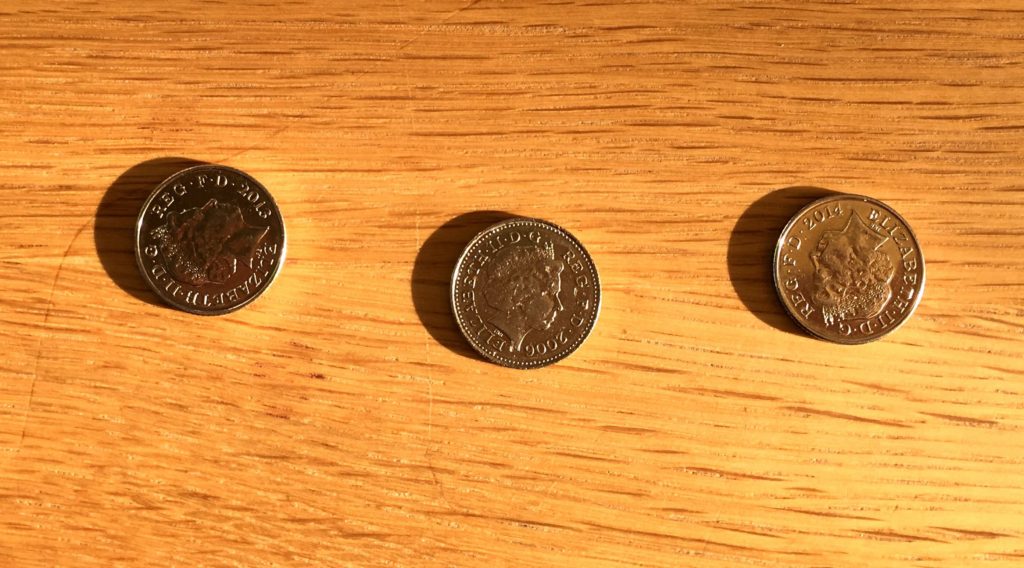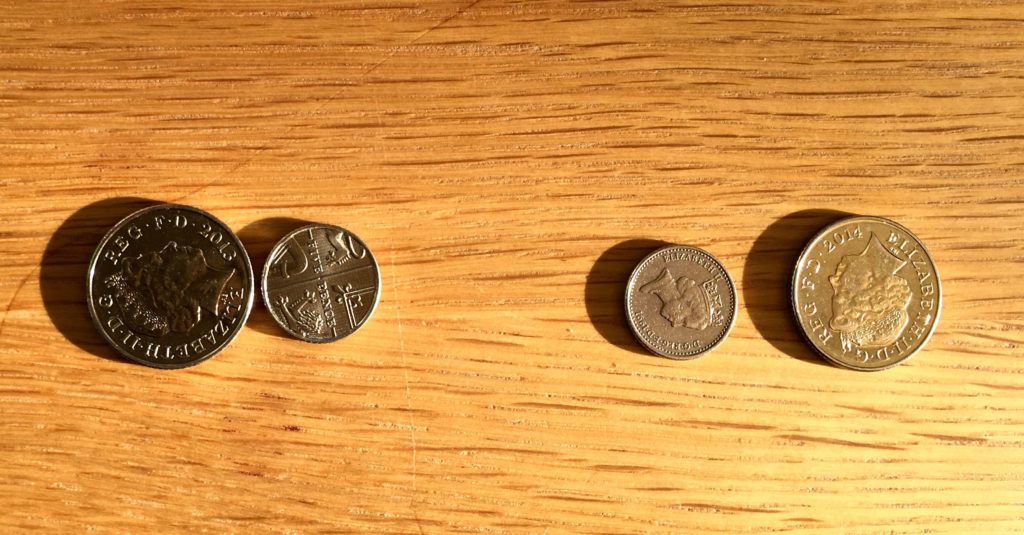
Disclaimer – I’ve been a primary school teacher for 14 years including being specifically trained to do specialised one- to-one work to help with maths. While this actual activity came out of my head the idea of using coins to help came from my training.
I posted a few weeks ago about how I’m helping E. with his homework. This week the homework he was given was quite challenging so I thought I’d post the actual activity we did. Even if your child isn’t studying this particular maths skill the general activities are applicable for lots of number work.
One of the difficulties many children have with maths is it’s very abstract (numbers on a piece of paper) rather than practical. My general advice if your child is struggling to understand something would always be to make it practical.
Activity – Halving 2 digit numbers
The issue E had with this is he could half numbers where both digits were even – e.g. 24 – in his head with no problem but he didn’t know (or couldn’t remember) how to half when the tens number is odd – e.g. 30
What I did
To make this practical I gave him 3 10ps and said we needed to share them. At first he tried to give me 10p and keep 20p for himself (clever boy). He knew that wasn’t actually fair of course so he realised he needed to split one of the 10ps.

Because he understands that a half of 1op is 5p he was then able to exchange the 10p for 2 fives and solve the problem

After a bit of practice he could also do 34p, 56p etc
General suggestions
- Actual money money is more appealing than play money – start by restricting it to 10s and 1s – you want the money to be an aid rather than another point of confusion.

- Be quiet (this works for any kind of learning) Try not give additional help too quickly. One tip I was taught is wait until it’s getting kind of uncomfortable then count to ten in your head. Then ask if they are still thinking or if they need help.
- If they get to the point they are just randomly yelling numbers they’ve stopped thinking!
- Little and often generally works best – ten or fifteen minute practice every day on a new skill is better than a long slog.
- Try not to think of yourself as teaching – more helping them to figure it out for themselves (I did this in the classroom too)
Other ideas
This worked because E. could physically move the coins around see where half was. He had enough of an understanding of the value of the 10p versus the 1p and the 5p for it to work.
If your child isnt quite at that point then they may need tens that are made up of ten actual things bunched together – e.g. sticks of 10 lego bricks, or sets of ten straws tied in an elastic band. Then they can physically split the number up.

In case you’re wondering this is what Little Miss was up to while I was focusing on E!!

I’m thinking of making this an ongoing series so do let me know if this helped. If you have any questions please ask – I may get another blog post out of it 😉


Whilst I’m not at this stage yet as my little is not quite 4, I can really see how this would work and likely be more appealing than numbers on a page. I remember hating Maths at school – for that very reason. A handy tip I’ll try to remember in a few years! 🙂 #thatfridaylinky
Jaki recently posted…Why We Shouldn’t Have To Feel The Baby Pressure
Thanks for you comment. 4 is such a lovely age 🙂
Fab ideas excellent post Thanks for linking to the #THAT FRIDAY LINKY come back next week please
Thanks for hosting 🙂